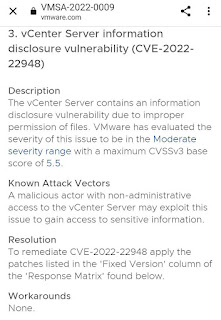In this post, I want to emphasize some of the important points of VSAN design by reviewing most primary VMware VSAN documentaries. Some of them included:
I tried to cover all aspects of planning and design however, maybe I forget to mention some of them. Of course, it makes me happy if you find and remind me as a reply.
- Don't ignore utilizing the same server configuration in the VSAN cluster, that is included identical hardware resources, such as processor model, total memory, and identical disk devices. Unbalancing the cluster can lead to storage performance reduction and different maintenance duration for each ESXi host. a uniform setup of the hosts also increases the rate of stability.
- Consider some extra/spare components like disk devices, network adapters for VSAN cluster's member or even a physical server with enough capacity for rebuilding operations in the cases of disk device or host failure.
- Try to keep always storage's used space less than rate of 70%. In the case of multiple VSAN cluster rebalancing operations (higher than 80% usage) it will affect on the line of business performance (Apps on VMs).
- Don't forget to use VSAN sizing tools and check your server platform and storage device model on the VMware Compatibility Guide (VCG) as a pre-requirement step of VSAN setup.
- Construct All-Flash architecture for the VSAN cluster, if you have any plan for VDI Deployment based on VMware Horizon View solutions even in the future, especially in the scenarios you will deploy Instant Clone. Enabling Deduplication and Compression options are highly recommended for this type of Desktop Pool to save storage space.
- Enable VSAN Encryption preferably before deploying VMs on VSAN Datastores to reduce the required time for this operation. Although it's possible to enable Encryption for both layers of Capacity and Cache, Compression can be done just for Capacity.
- Preparing more disk groups with a few members of the disk device can break the fault domain originated by any disk failures. However, in your VSAN planning phase, you should attend to these triple metrics carefully and choose whatever has a higher priority in your infrastructure: Required total capacity, better performance, and higher fault tolerance.
- Using the Passthrough mode for the setup of the VSAN disk devices has better performance than using RAID0 mode which is configured via server local array configuration tools. Also, RAID0 required more configuration and maintenance actions. At last, if you have some non-VSAN disks, do not assign them as the RDM for your VMs.









